In the late 19th century, the Vatican was an island surrounded by an enemy country, Italy. Pope Leo XIII was practically a prisoner inside the Vatican walls and to cheer himself up, he created the Candelabra Gallery. In this guide, learn the history of the Vatican Gallery of the Candelabra and the most important works inside.
Pro Tip: Planning your visit to the Vatican in Rome? Bookmark this post in your browser so you can easily find it when you’re in the city. See our comprehensive guide to Vatican City for more planning resources, our top Vatican tours for a memorable trip, and how to visit the Vatican.
Vatican Gallery of the Candelabra Guide
The Vatican Gallery of the Candelabra houses an impressive collection of notable statues, relics, and works of art. As the name suggests, the Gallery of the Candelabra is named for the enormous marble candlesticks that you can find in each section as you walk down the hallway.
The gallery was completely renovated during the pontificate of Pope Leo XIII Pecci (1878 – 1903) and that is what you see today. It was designed so that each piece is like a furnishing for a house.
As you prepare for your Vatican Museums visit, you might also want to check out our ultra-comprehensive list of what to see at the Vatican written by a licensed Vatican guide! In this guide, find out more about the history of the gallery and what to see when you visit. Here’s what we’ll cover:
- History of the Gallery of the Candelabra
- What To See in the Gallery of the Candelabra
- Where Did the Gallery Get Its Name?
- Vatican Tours with Gallery of the Candelabra
Not ready to book a tour? See if a Vatican tour is worth it.
History of the Gallery of the Candelabra
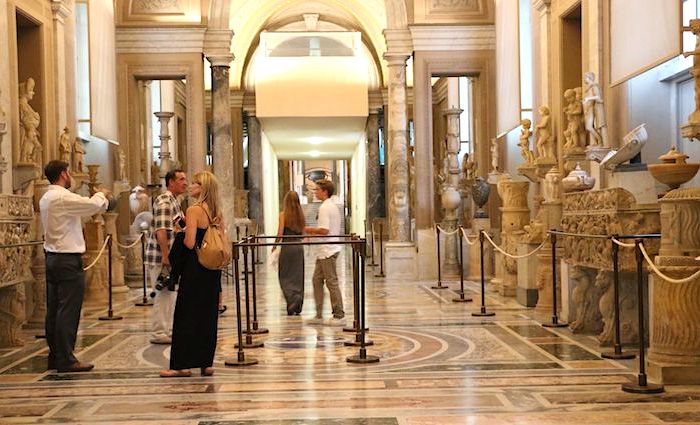
During the second half of the 18th century, there was a need for more space in the Vatican. The pontifical collections were growing exponentially as further excavations took place across Rome and Lazio. The Gallery of the Candelabra forms part of the Pio Clementino Museum. The Cortile delle Statue is where the museum houses most of the classical sculptures in the pope’s collections.
The influence of Enlightenment thinking is what led the pope to turn the building into a museum. Therefore, in the modern sense, allowing the public to enter and experience the treasures that had been found across the country, and promoting the study and understanding of the collections.
Popular Vatican Tours
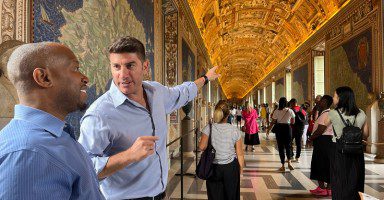
Best Selling Tour
Privileged Entrance Vatican Tour with Sistine Chapel
Without the right access, visiting the Vatican means fighting crowds, long waits, and missing the most significant rooms and works of art. Our privileged entrance tour offers more than just entry—it’s an immersive experience led by a storytelling guide who brings the Vatican to life. Skip the line and explore the Vatican Museums, including the Raphael Rooms, the Sistine Chapel, and St. Peter’s Basilica with engaging insights that make each moment memorable and meaningful.
See Prices
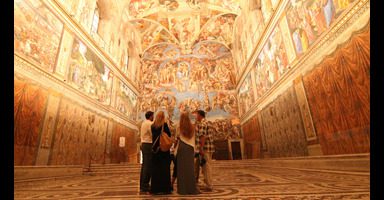
Exclusive Value
Exclusive Sistine Chapel After Hours Small Group Tour
The Vatican Museums are packed with crowds by day, but at night, they’re yours to explore. On this exclusive after-hours tour, step into the world’s most treasured collection after it has closed to the public. With a small group and expert guide, roam the Raphael Rooms, the Gallery of Maps, and Michelangelo’s Sistine Chapel without the chaos. This isn’t just a tour. It’s a once-in-a-lifetime privilege to experience the Vatican as few ever will!
See Prices
Not ready to book a tour? Check out our best Vatican tours to take and why.
What To See in the Gallery of the Candelabra
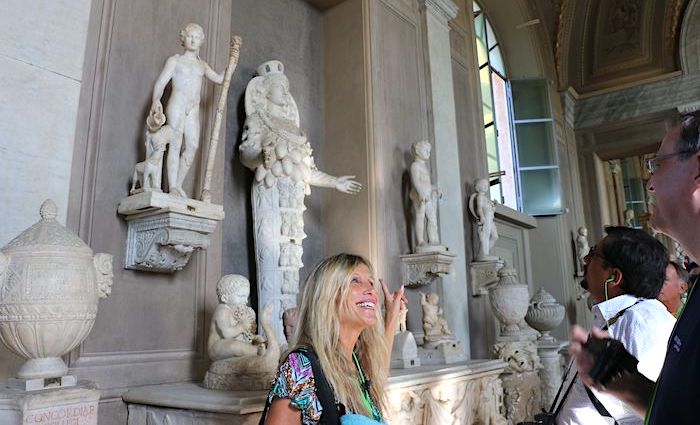
Artworks on the Walls and Ceiling
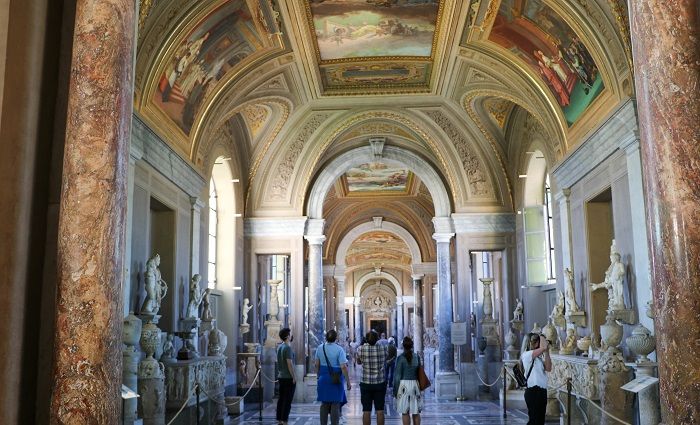
The Gallery is decorated with impressive chiaroscuro and grisaille frescoes across the walls and vaults. Chiaroscuro is a traditional technique using bold contrasts. Grisaille is a painting technique using grey tones as a base and is often an underpainting for an oil painting with other colors. These techniques are what make the frescoes in the gallery appear three-dimensional.
Pope Leo XIII commissioned the artist Ludwig Seitz and Domenico Torti for the ceiling between 1883 and 1887, as well as for the walls, although various other artists also contributed to these.
For example, one of the most notable works is the fresco by Torti, The Triumph of Truth, which shows the remarkable events of the time.
However, the German artist Seitz painted the grandest and most important series across the ceiling, which took inspiration from Pope Leo XIII’s desire for St. Thomas Aquinas and his philosophy to have priority in Catholic theology. So, in the middle of the ceiling, you can see St. Thomas kneeling and offering his works to the Roman Catholic Church.
Important Features of the Gallery
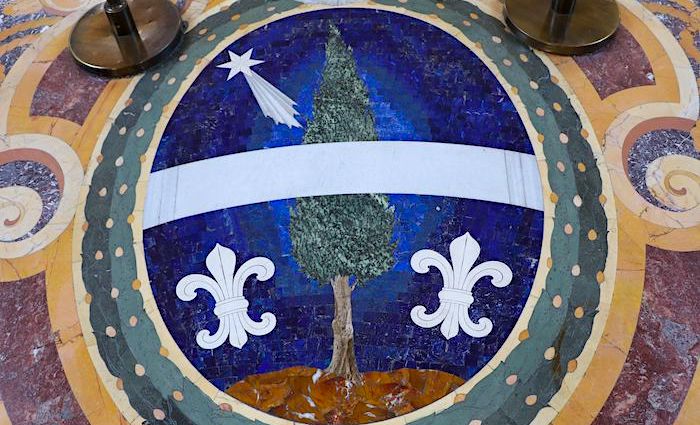
Luigi Medici, his son Paolo Medici, and Giuseppe Rinaldi designed the spectacular inlaid marble floor. They used marble found during excavations of the Tiber River in Testaccio.
In the middle of the gallery, you’ll see a small, cordoned-off area protecting the mosaic on the floor. It’s impossible to miss it with the brilliant and rich blue colors.
The coat of arms of Pope Leo XIII in the middle of the gallery is particularly impressive because it contains the precious stone lapis lazuli. At the time, the price was the same as gold because the only place you could get it was in the mines of a remote region of Afghanistan.
Roman Empire Art
The hall contains works found throughout Rome and Italy, bringing relics of the vast Roman Empire into the modern day. For example, in the first section, after entering through the monumental bronze gates, one of the most interesting pieces is the Gigantic Toe of a Right Foot, which was found in early 1880 near the Colosseum. This is just one small part of a statue that originally stood around 13 meters tall, and was perhaps one of the cult statues of the nearby Temple of Venus and Rome.
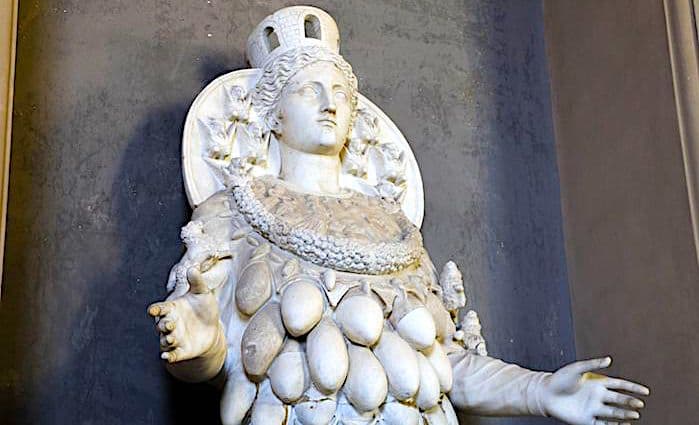
In the second section, there is a Meridian, which was found in 1858 in the ancient coastal town of Ostia. The dial is divided into twelve vertical segments, which in turn are divided into three horizontal bands. The first corresponds to the hours, and the second to the winter solstice, equinox, and summer solstice.
You’ll also see a striking statue in this section and definitely the biggest eye-catcher. The Artemis Of Ephesus is one of many copies that you’ll find, which would have originated in Ephesus, Asia Minor in modern-day Turkey. The statue is of Artemis the goddess of fertility and those are bull testicles.
Statues in the Gallery of the Candelabra
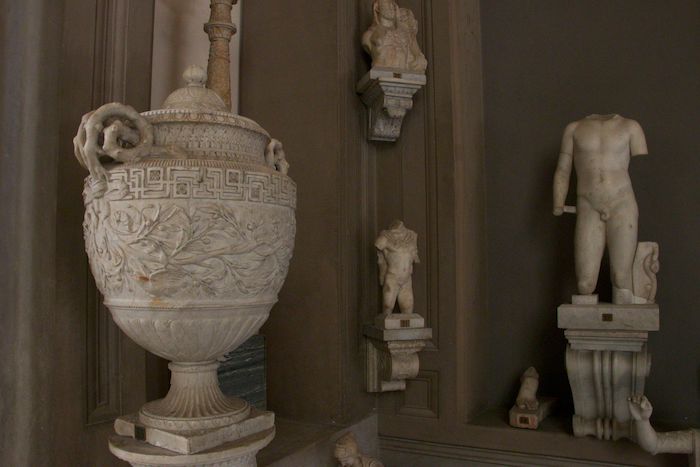
The third section contains an extraordinary mosaic with still-life from the second century from Tor Marancia on the Via Ardeatina, which is actually where most of the works in this section were found.
The statues Hypnos God of Sleep and Thanatos Genius of Death are from the mid-second century, inspired by the work of Praxiteles, found in 1774 in the Villa of Cassius at Tivoli.
The impressive Statue of an Old Fisherman stands in the fourth section, another find from the second century and discovered in Anzio during excavations in the Pamphilj property. The Pamphilis were a famous Roman aristocratic family whose house today contains one of the most valuable private collections of paintings in the world.
The fifth section contains a Circular Altar. It dates from as far back as the first or second century B.C. from Tor Colombaro on the Appian Way. It depicts a scene of sacrifice in the presence of Mercury.
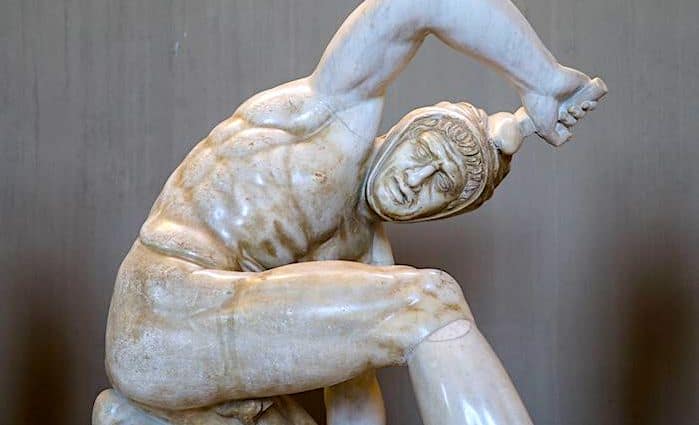
One of the most famed exhibits is in the sixth and final section of the gallery. The Persian Warrior is a Roman copy of a votive offering by Attalos II of Pergamon probably made around the year A.D. 110.
This copy of the statue was discovered in Rome between 1503 and 1512. Workers found it during the construction of Palazzo Medici, now Palazzo Madama.
The original version of this statue would have been part of a group of Greek victories over the Persians at the battle of Marathon in 490 B.C.
Where Did the Gallery Get Its Name?
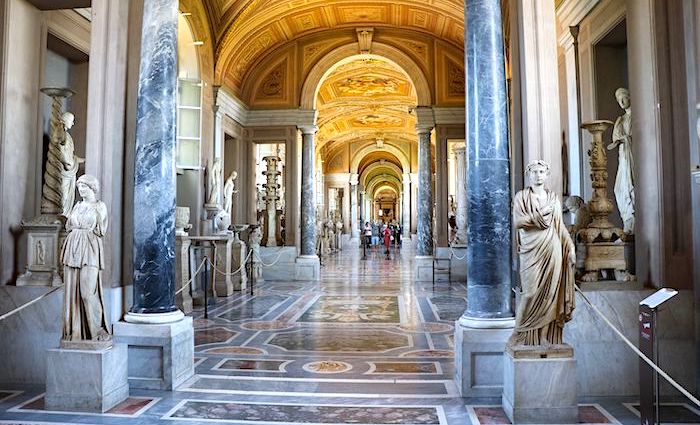
The Gallery of the Candelabra gets its name from the majestic candelabras that go with the colored marble columns. However, it was originally an open-air loggia built in 1761. The long hallway was walled at the end of the 18th century. Now, it’s divided into six sections full of notable statues, relics, and works of art.
Originally, Pope Pius VI designed the gallery between 1785 and 1788. Pope Leo XIII completely renovated the gallery, and this is largely the decoration you see today. Above all, Annibale Angelini directed the reorganization of the gallery. He appointed Domenico Torti and Ludwig Seitz for the paintings and appointed Giuseppe Rinaldi and Luigi Medici for the marble inlays. The works were arranged like furnishings in a home. You also enter through the original monumental bronze gates, which are still in place today.
Over time, the heat of the Roman summer caused the colors in the frescoes to fade away almost entirely. As a result, the gallery underwent its most recent restoration in 2016.
Vatican Tours with Gallery of the Candelabra
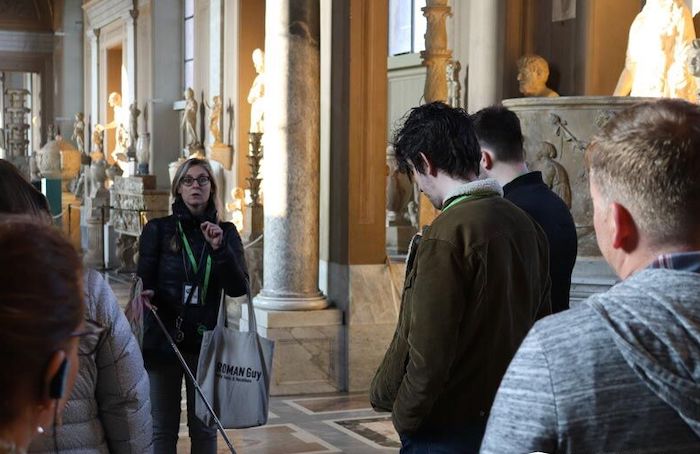
Supposedly, if you stand in front of each art piece for one minute in the Vatican Museums, it would take you 12 years to see everything. How incredible is that! While it’s certainly possible to visit the museums on your own, I highly recommend you join a tour guide.
Not only will a tour guide get you skip-the-line access, they’ll also guide you through the Vatican Museums quickly. Your guide will get you in and out before you go into overload without missing anything important.
Best of all, you’ll hear all the intriguing stories and history that make this museum and its collections so fascinating. It’s an added layer that will make your Vatican visit all the more meaningful.
There are lots of Vatican tour options to suit your interests and schedule, compare our best Vatican tours. In all of our Vatican tours, you’ll witness the Gallery of the Candelabra up close, so check them out and reserve your spot! See the video below for the top things to see at the Vatican—the Gallery of the Candelabra is featured at number five and you’ll get a short preview of this beautiful space.
Not ready to book a tour? Find out if a Vatican tour is worth it.
Here is Where to Stay in the Most Popular Destinations
Rome, Florence, Venice, and the Amalfi Coast and Capri

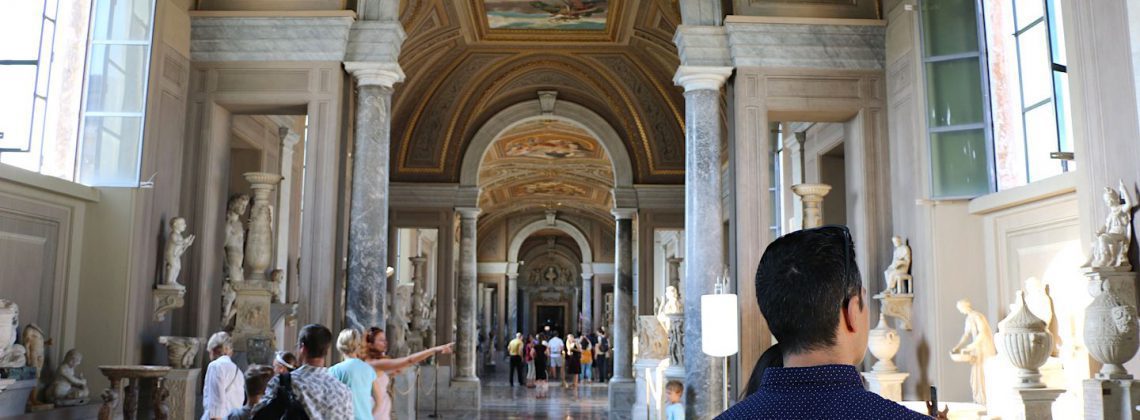
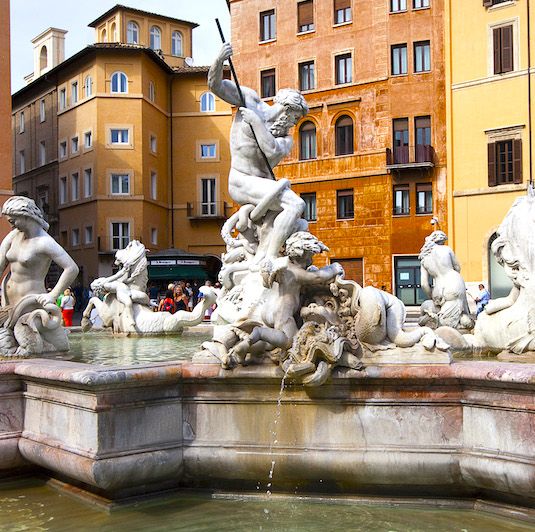
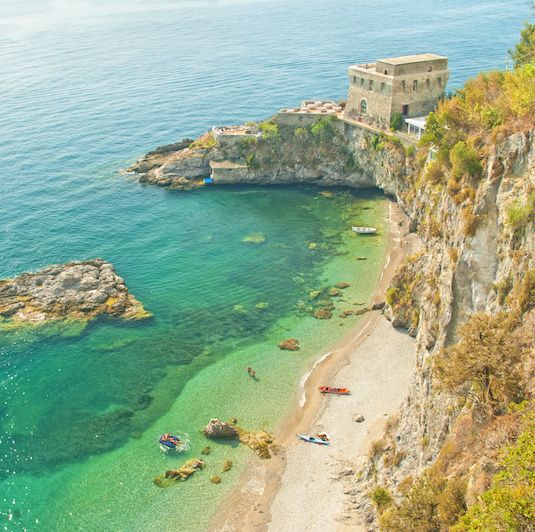
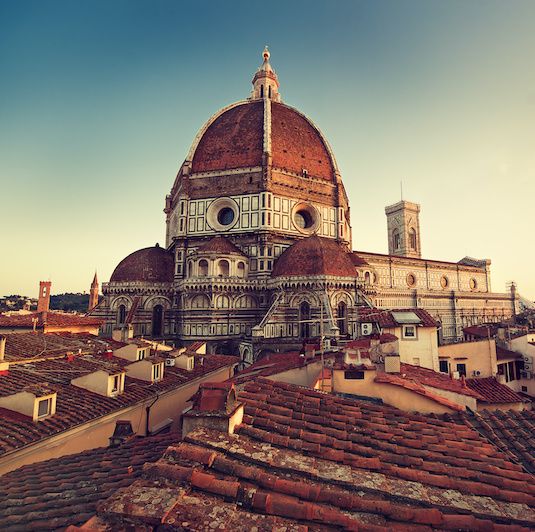
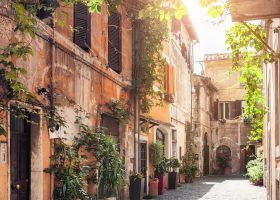
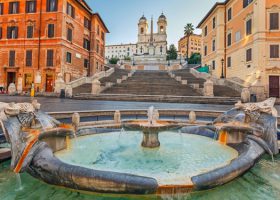
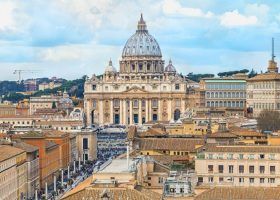
Love this information!!
Ciao Solana! So glad to hear that you enjoyed reading our blog! We’d love to welcome you on a Vatican tour sometime soon 🙂
Thank you, I’m not big on organized religion but I’m very interested in Roman history. I am Sicilian descent
So thank you btw